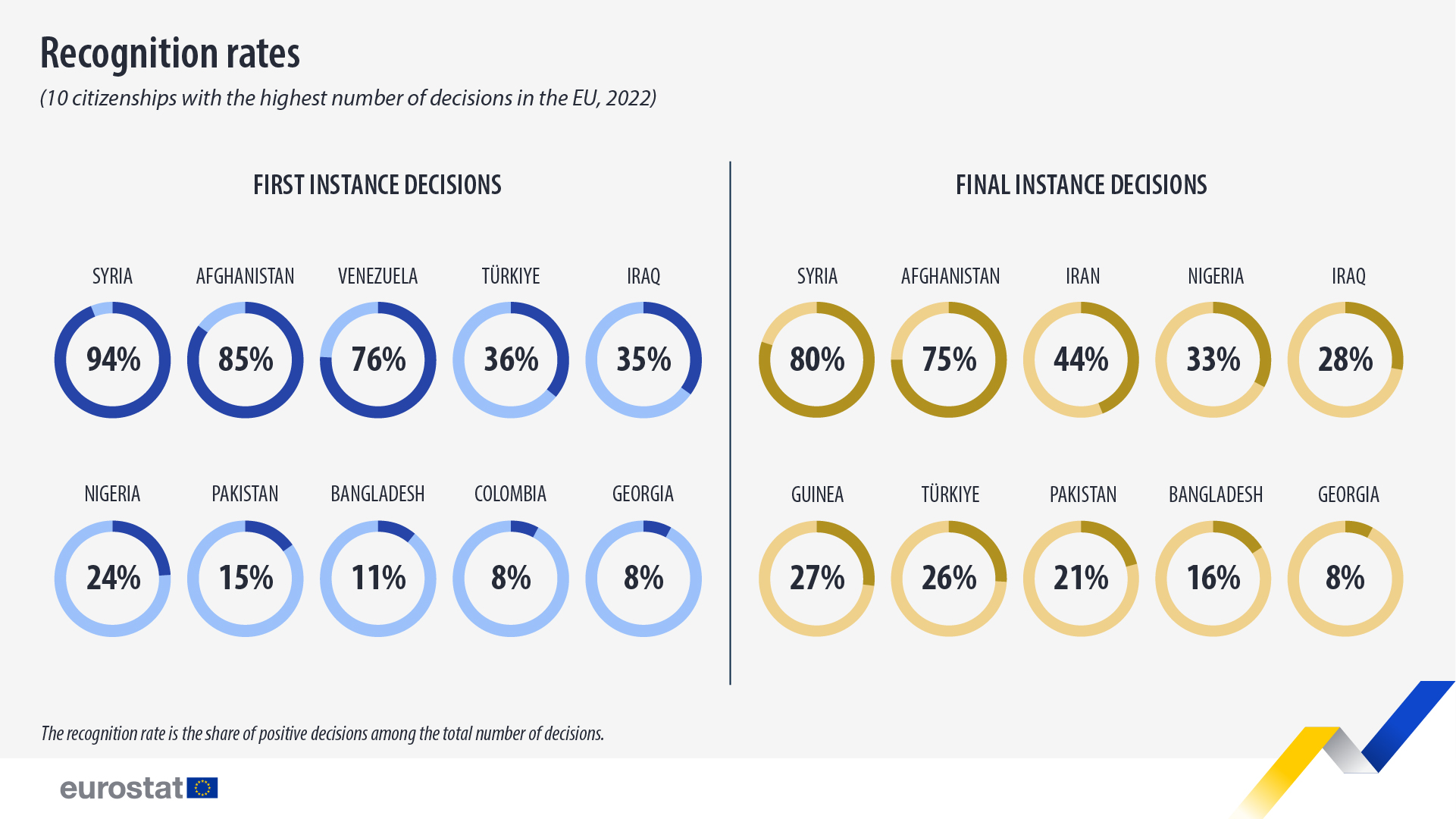Asylum decisions up by 40% in 2022

In 2022, EU countries granted protection status to 384 245 asylum seekers, up by 40% compared with 2021 (275 040). This information comes from data on asylum decisions published by Eurostat today. The article presents a selection of findings from the more detailed Statistics Explained article.
Among the 384 245 asylum seekers who were granted protection status in 2022 in the EU, 44% received refugee status, 31% were given subsidiary protection, and 25% received humanitarian protection. Compared with 2021, the number of refugee status granted increased by 22%, subsidiary protection was up by 48%, and humanitarian protection registered the highest increase with 72%.
The highest number of people who received protection status was reported by Germany (159 365, 41% of the EU total), ahead of France (49 990, 13%), Italy (39 660, 10%), and Spain (35 765, 9%). Together, these four countries granted 73% of the protection requests at the EU level.
Syrians, Afghans and Venezuelans: main beneficiaries of protection status
The largest group who obtained protection status in the EU in 2022 were Syrians (29% of the total number of people granted protection status in the EU). They were followed by Afghans (23%) and Venezuelans (6%).
The majority of Syrians (68%) and Afghans (55%) were granted protection status in Germany, while almost all Venezuelans (92%) were granted protection status in Spain.
Source dataset: migr_asydcfsta (first instance decisions) and migr_asydcfina (final decisions)
49% of asylum decisions at the first instance made in the EU resulted in protection status
In 2022, 632 360 first instance decisions on asylum applications were made in the EU, and a further 218 260 final decisions following an appeal or review. Decisions made at the first instance resulted in 310 400 grants of protection status, while another 73 845 people received protection status after an appeal or review.
The recognition rate at the EU level, i.e. the share of all positive decisions among the total number of decisions, was 49% for first instance decisions. For final decisions in appeal or review, the recognition rate was 34%. These rates include both international (i.e. refugee status and subsidiary protection) and national protection status (humanitarian protection based on national legislation).
Among the top 10 citizenships that received first instance decisions in 2022, Syrians (94%), Afghans (85%) and Venezuelans (76%) had the highest recognition rates, while Colombians and Georgians (both 8%) and Bangladeshis (11%) had the lowest.
For final instance decisions after an appeal or review in 2022, the citizenships with the highest recognition rates were Syrians (80%), Afghans (75%) and Iranians (44%), while the lowest recognition rates were registered among Georgians (8%), Bangladeshis (16%) and Pakistanis (21%).
Source dataset: migr_asydcfsta (first instance decisions) and migr_asydcfina (final decisions)
For more information
- Statistics Explained article on asylum annual data
- Dedicated section to migration and asylum
- Database on asylum
Methodological notes:
- Application for international protection means an application for international protection as defined in Art. 2(h) of Council Directive 2011/95/EU, i.e. including requests for refugee status or for subsidiary protection status, irrespective of whether the application was lodged on arrival at the border, or from inside the country, and irrespective of whether the person entered the territory legally (e.g. as a tourist) or illegally.
- Where relevant, data might not add up to 100% due to rounding.
If you have any queries, please visit our contact us page.


